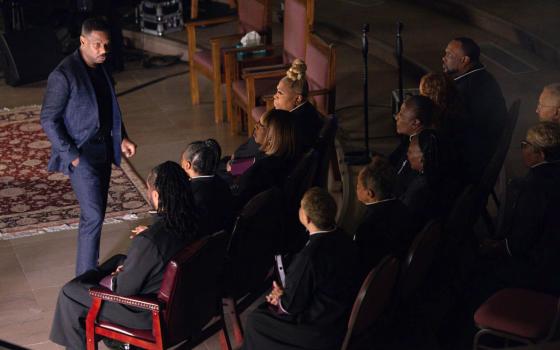
(Unsplash/Erda Estremera)
On a number of occasions, in speaking with groups of sisters, I have approached the end of my remarks by asking two questions: What do you consider the most successful time in your community's history? And, what do you consider the most inspirational time?
Answers to the first are typically something like these: "We had lots of people entering." "We opened two or three new missions each year." Or "We built a new wing on the motherhouse (or on the hospital or academy) — so beautiful!" The second, on the other hand, generates another kind of response: "Oh, there were only a handful of sisters — poor, and in an unheated cabin (or attic, or basement). They had to break a layer of ice to wash in the morning, and often lacked sufficient food or firewood. But they had faith — lots of faith — and joy and hope and optimism about the rightness of their endeavor."
What's apparent is that the comments about "success" are almost always quantitative, while the others are invariably qualitative. That's interesting, I usually remark. Why the difference? And why is the inspirational era — usually the time of founding — not also seen as successful?
It seems to me that this contrast raises some important things to think about as the numbers entering religious life are considerably and undeniably smaller than during what many regard as the so-called "golden age" of the quarter century before Vatican II. As congregations plan for the future, some enter intentionally into processes of completion. Others worry about aging memberships and property too big for needs and too unwieldy or isolated to sell. Some have had few or no entrants for more than a decade and have decided not to welcome potential newcomers.
Meanwhile, even communities that are looking forward celebrate women who enter singly and who are often young in vocation but not necessarily in years. Meanwhile, a very few communities boast of attracting numbers of candidates unusual in this day and age — and they and their supporters often imply or outright declare that the "success" of these representatives of "authentic" religious life demonstrate the flaws in a more renewed understanding of vowed commitment.
Advertisement
But something seems to be missing from that vision. Just a few weeks ago, I attended the summer assembly of the community to which I belong as an associate. Two panels were highlights of the week for me. One was a dialogue between a "nun" and a "none": women who had clear affection and admiration for one another, despite differences in age, grounding in spirituality, and hopes for their futures. But they shared a faith-filled passion for social justice, and the "none" repeatedly (both during the session and throughout the days that followed) expressed how inspired — that word again! — she was by the vowed religious she had come to know and to befriend.
The other memorable panel involved "newer" members of the congregation: some young in years, some in religious life and some both, all of whom spoke powerfully about their hope for the future and how they welcomed the path ahead, even if it was not entirely clear where it might lead. These were hardly naïve individuals but rather women who looked forward with faith both in God and in those with whom they had determined to cast their lots. As I looked at their faces and listened to the wisdom of their words, I couldn't help being reminded of the "deep story" of the community's founding. Moreover, I saw clearly that this legacy was not only embodied in the congregation's earliest days, but it also has continued to deepen over time.
My social media feed these past few weeks has been packed with announcements of professions (first and final), as well as new candidacies and novitiates. Photos of those taking such momentous steps are filled with joy, laughter and optimism. I have watched livestreams of vows, "liked" intercommunity expressions of welcome, and prayed along with women drawn more by hope and spiritual longing than by security and certainty.
So as we look ahead to where religious life is going, can we overcome an unfortunate and perhaps even unconscious obsession with size and numbers and instead focus on the inspiration that should be central to our understanding of "success," even — or especially — in religious life? Can we think in terms more qualitative than quantitative as we assess what is inspiring and what is important?
[Margaret Susan Thompson is a professor of history at Syracuse University. She is a scholar of the history of women's religious life and has published and spoken extensively on the history of American sisters. She is an associate with the Sisters, Servants of the Immaculate Heart of Mary of Monroe, Michigan.]






